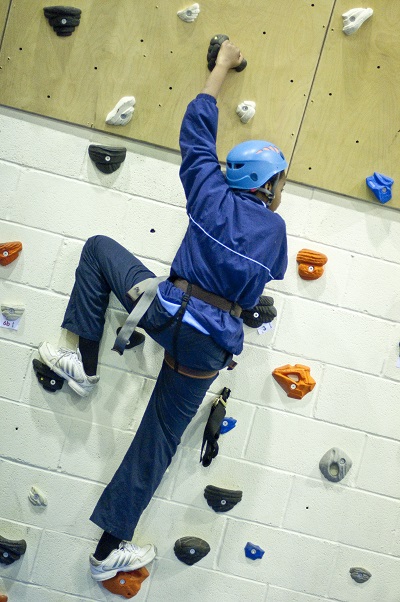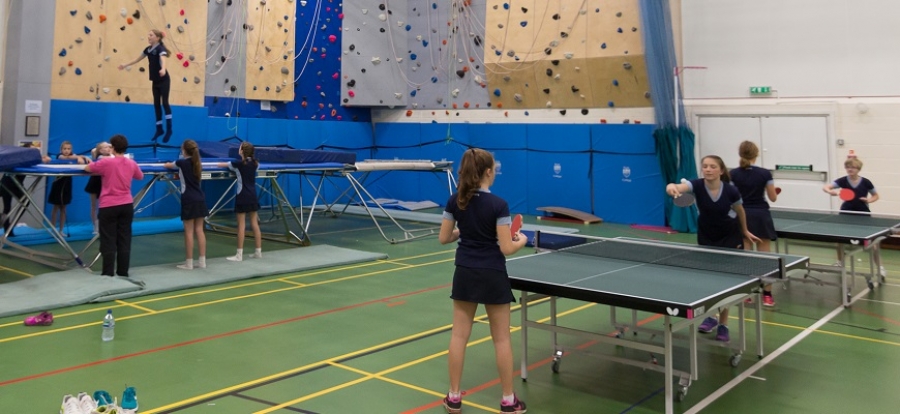This trend is particularly true of girls. The complex and largely negative attitudes held by many girls towards sport and physical “Many girls were not interested in traditional sports.”activity is an issue that schools have been attempting to address for years. Research has identified an alarming fall in the number of girls participating in sport. A recent study by the Women’s Sport Foundation showed that by age 14, girls are dropping out of sports at twice the rate of boys.
Physical Education in schools has been regularly criticised as inappropriate for many girls’ needs, with a narrow curriculum that is dominated by competitive team games. Throughout my teaching career, I have seen girls become reluctant exercisers simply because the curriculum they are offered in school is too narrow.
I believe that sport should be about encouraging and motivating young people to participate in physical activities that they can continue into their adult lives. When a curriculum focuses only on competitive and elite sports, it will not appeal to those girls who want to enjoy and benefit from participating without the need for an end result.
At Kent College Pembury, we have first-hand experience of this. Last year, we undertook some research with our pupils, asking them about the barriers they faced around participation in sports. We found that whilst there was a core group of girls who were motivated by competitive sports, there was a significant proportion that was not interested in traditional sports. However, many of those girls were interested in health and fitness. Our research showed that a fear of failure and self-consciousness when exercising were common factors in their reluctance to do so.
To counteract this, we have launched a new Sport and Wellbeing programme. Every afternoon, girls from different year groups, from Nursery through to Sixth Form, have the opportunity to participate in activities that develop healthy minds and healthy lifestyles. This includes a programme for those that do enjoy competitive, individual disciplines and team sports such as athletics, hockey and netball. Importantly, it also includes a broader range of activities such as boxfit, badminton, trampolining, sessions on our outdoor adventure course, climbing, yoga, circuit training, forest school activities, lifesaving, basketball, table tennis, swimming and dance. Whilst pupils tend to take part wearing our school Sports kit (which has been designed with their input using technical fabrics to ensure they are comfortable), they are allowed to wear their own suitable active-wear to help reduce anxiety about their body image.

In order to support our elite sportswomen who are performing at national and international levels and thriving amidst the pressures of top-level sport, we run weekly scholarship sessions that provide each athlete with an individual performance programme, a mentor and sessions with our on-site strength and conditioning coach.
We are very fortunate to have excellent facilities that allow us to offer a flexible programme, but facilities are not the be-all and end-all. Much “Activities include climbing, yoga, circuit training, forest school activities, lifesaving and basketball.”more importantly, the Sport and Wellbeing programme has become a fundamental part of our curriculum. The programme involves staff from across the school and from a range of roles, not just the Sports/PE department. Crucially, we have only slightly lengthened the school day, and there is no impact on the academic curriculum – often another obstacle in girls’ participation.
Of course, a key part of helping to inspire our pupils is leading by example and ensuring that the girls see me exercise too. I was never a great hockey player or an elite athlete at school, but later in life I discovered a love of running. As part of the Sport and Wellbeing afternoons, I offer a Running Club for the Sixth Form and have joined our cross country team for a 10 mile sponsored run, which I am thoroughly enjoying.
At the beginning of the year, Sir Ken Robinson wrote an article arguing that active play is the natural way that children learn, stating it is "essential to their healthy growth and process, particularly during periods of rapid brain development." Throughout my career, I have seen the benefits of active participation, in sport and how it can have a positive impact on improved attention, memory, concentration and overall academic performance. With children spending so much time at school, programmes such as our Sport and Wellbeing programme combined with exercise out of school, will only have a positive effect on pupils’ learning.
Want to receive cutting-edge insights from leading educators each week? Sign up to our Community Update and be part of the action!


















